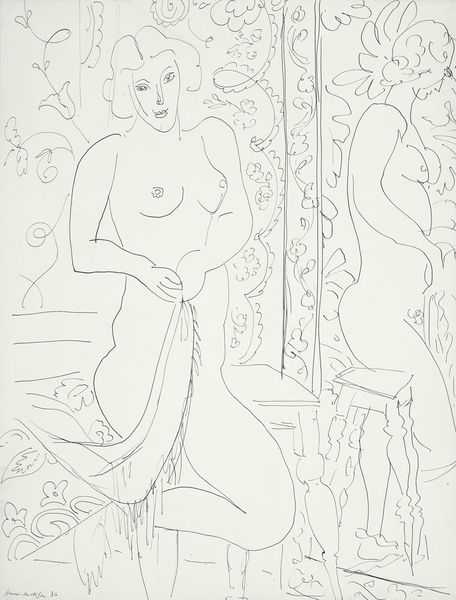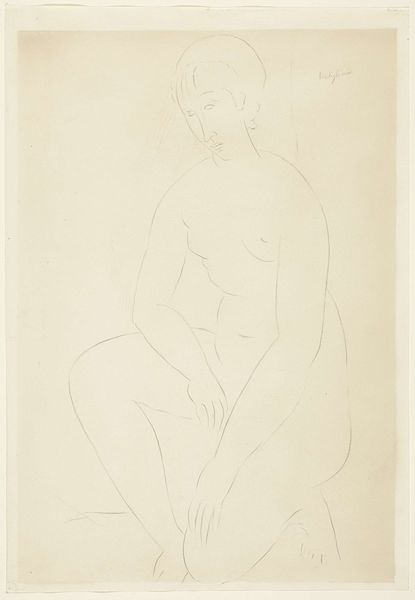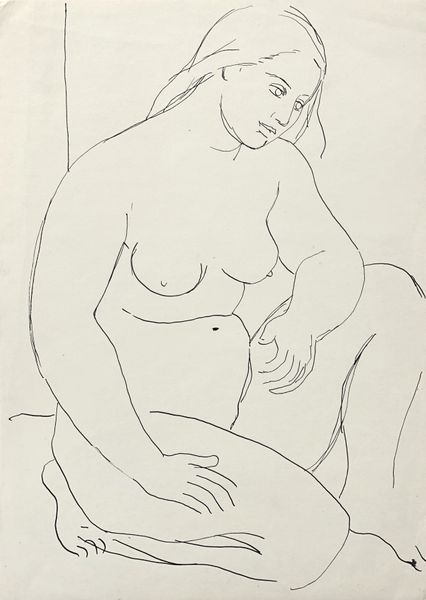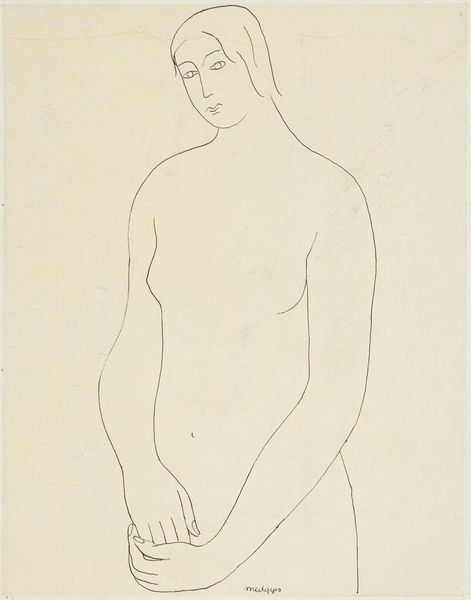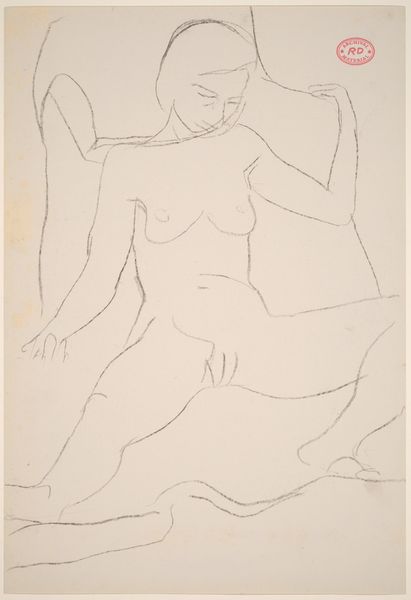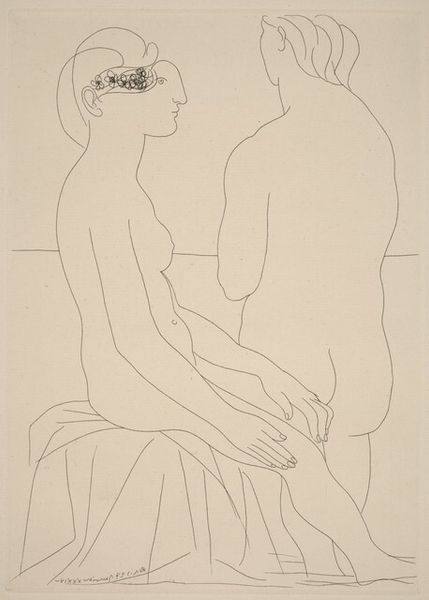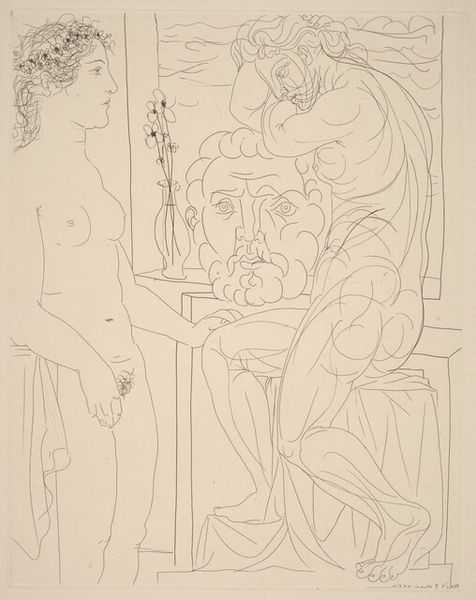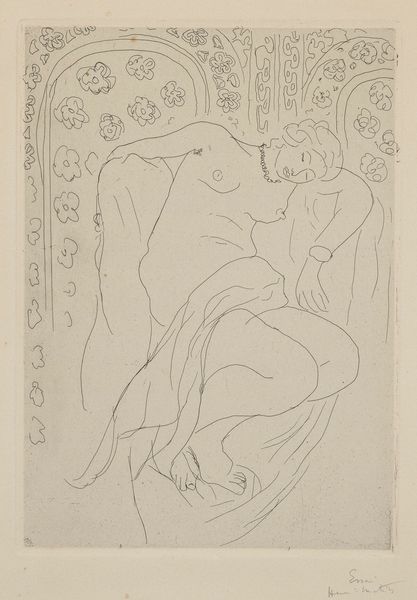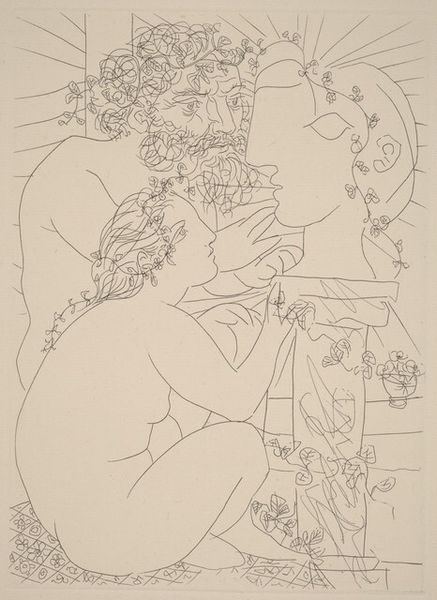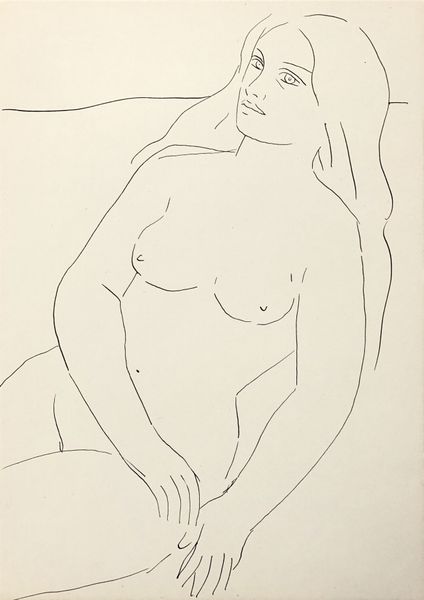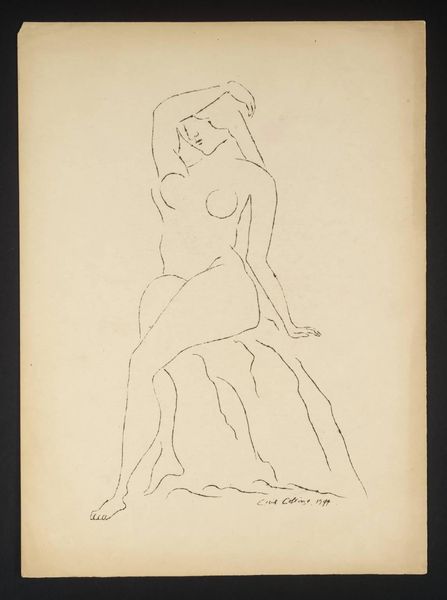
Nude Seated before a Curtain (Femme nue assise devant un rideau) 1931
0:00
0:00
drawing, print, paper, ink
#
portrait
#
drawing
#
ink drawing
# print
#
pen sketch
#
pencil sketch
#
figuration
#
paper
#
ink
#
nude
#
modernism
Dimensions: plate: 31.3 x 22.3 cm (12 5/16 x 8 3/4 in.) sheet: 50.4 x 38.9 cm (19 13/16 x 15 5/16 in.)
Copyright: National Gallery of Art: CC0 1.0
Curator: Pablo Picasso's "Nude Seated before a Curtain" from 1931 is a beautiful example of his linear style from this period, created using ink on paper. Editor: It strikes me immediately as quite delicate. The spareness of line gives it a kind of ethereal quality, doesn’t it? And the drawing paper must have had some tooth to it, seeing how the line has this very subtle break-and-start along the length. Curator: Definitely. We can see Picasso's ongoing exploration of form and his relationships with the women in his life—likely Marie-Thérèse Walter, his "golden muse" of that era. It's interesting how he uses the classical nude as a starting point but imbues it with a decidedly modern sensibility. Editor: I’m fascinated by the apparent simplicity of the lines, masking an intensely worked through process. The texture given to the background, as though she were in front of an embroidered textile – one wonders if this hints at an existing piece of needlework, an echo in pen and ink of someone else’s manual labour? Curator: Absolutely. The curtain becomes a charged backdrop, echoing domestic interiors, possibly signifying confinement or an almost stage-like presentation. Think about the context in which this was made – the interwar years, anxieties around representation and gender roles...it all seeps in. Editor: The lack of chiaroscuro brings a sense of flatness to the subject which keeps it from being overtly sexualized, I think. The nude is mediated – refigured – through line. Almost as though it's less about 'her' and more about what can be coaxed from a nib and bottle of ink. It's also clear it wasn't a quill! The relative smoothness speaks to steel, which then brings up industrial manufacturing and production of material... Curator: Precisely. And consider Picasso’s status – his persona had become synonymous with modern art, transforming him into a brand. Works like this reflect not just an individual's artistic journey, but the shaping and reshaping of art market values. Editor: Yes! The material of his pens, the kind of paper used, all contribute, alongside the artwork, to a valuable product! Curator: Indeed. It layers the act of representation and consumption onto each other, in fascinating ways. Editor: Thinking about this work has revealed just how enmeshed technique and material are with its social, artistic, and historical situation. It’s far from being just a ‘nude’, isn’t it!
Comments
No comments
Be the first to comment and join the conversation on the ultimate creative platform.
